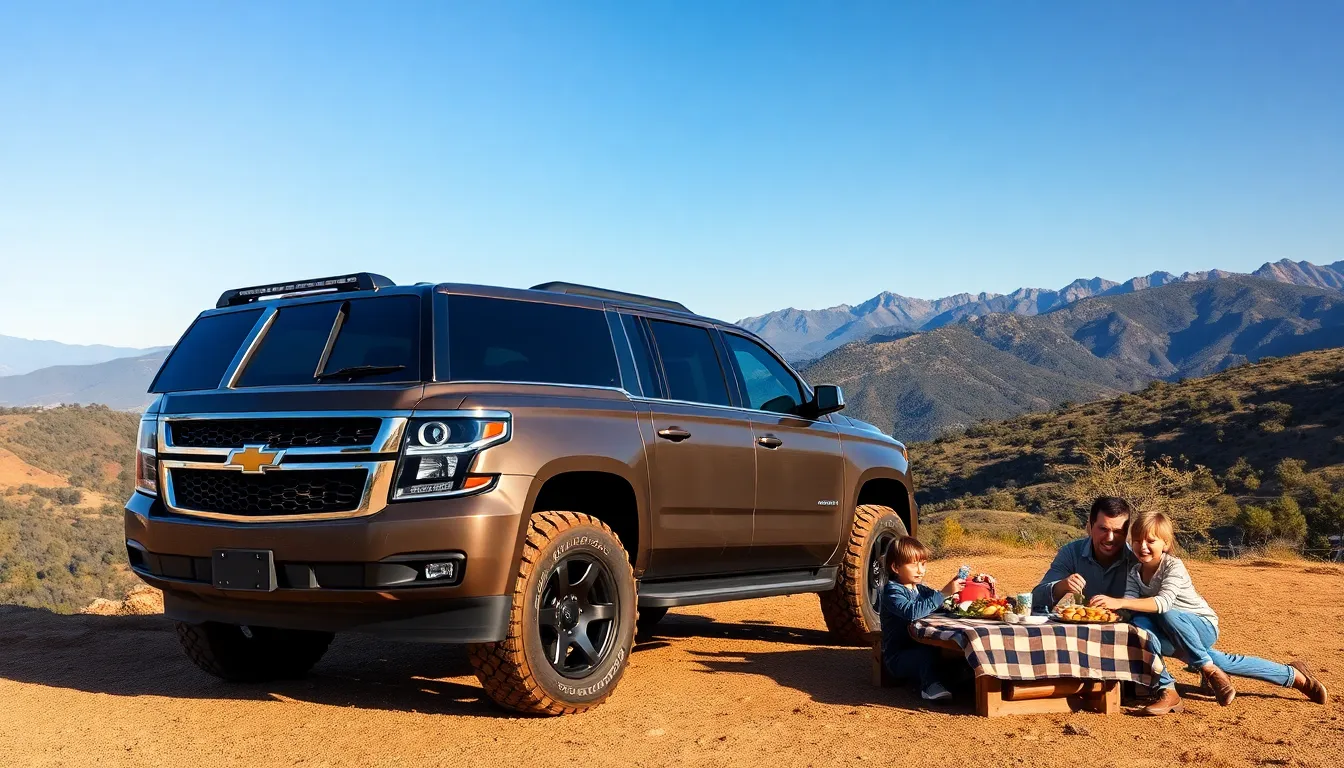We’ve all felt that undeniable presence when a massive SUV or full-size truck pulls up beside us at a traffic light. There’s something commanding about big cars that captures our attention and sparks conversations about power, safety, and status. Whether you’re hauling a boat to the lake or simply want the confidence that comes with driving something substantial, large vehicles offer benefits that compact cars simply can’t match.
The automotive industry has shifted dramatically over the past decade, with Americans increasingly choosing bigger vehicles for their daily drives. From three-row SUVs that seat eight comfortably to heavy-duty pickups that can tow massive trailers, today’s big cars combine impressive capability with surprising luxury and technology.
But with great size comes great responsibility – and plenty of questions. We’ll explore everything you need to know about owning a large vehicle, from fuel efficiency considerations to parking challenges and safety advantages.
Understanding What Makes Big Cars So Popular
Big cars continue to dominate our roads and capture consumer hearts for compelling reasons. We’ll explore the classifications that define these vehicles and the market forces driving their popularity.
Size Classifications and Categories
Full-size SUVs represent the largest consumer vehicles available today. These commanding vehicles typically measure over 200 inches in length and offer three rows of seating for up to eight passengers.
Large pickup trucks fall into the heavy-duty category with impressive towing capacities. Models like the Ford F-350 and Chevrolet Silverado 3500 can pull over 30,000 pounds while providing spacious crew cab configurations.
Luxury SUVs combine size with premium features and materials. Vehicles such as the Cadillac Escalade and Lincoln Navigator stretch beyond 210 inches while offering leather interiors and advanced technology systems.
Commercial vans serve both business and family needs with their massive cargo space. The Ford Transit and Mercedes Sprinter provide over 400 cubic feet of storage capacity for those requiring maximum utility.
Market Demand and Consumer Preferences
Safety concerns drive many families toward larger vehicles for protection. We see crash test data consistently showing that bigger cars provide better occupant protection in collisions with smaller vehicles.
Cargo capacity appeals to active families and outdoor enthusiasts. Large vehicles offer 80-100 cubic feet of storage space compared to just 15-20 cubic feet in compact cars.
Towing capability attracts consumers with boats, trailers, and recreational vehicles. Modern large SUVs and trucks can tow between 8,000-12,000 pounds for weekend adventures.
Status and presence influence purchasing decisions as bigger vehicles command respect on the road. We observe that luxury large vehicles often serve as symbols of success and achievement in many communities.
All-weather confidence makes big cars attractive in challenging climates. Higher ground clearance and available all-wheel drive systems provide superior performance in snow, mud, and rough terrain conditions.
Top 10 Largest SUVs Dominating American Roads
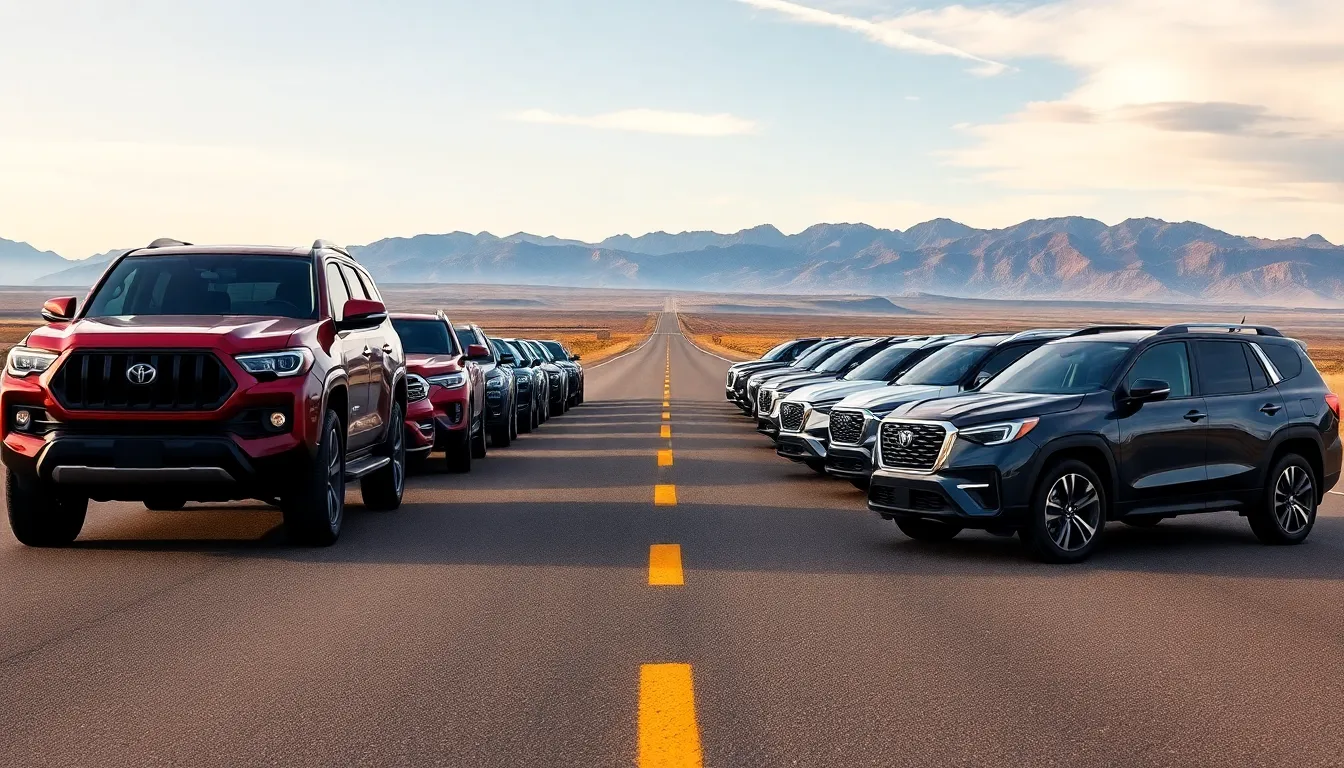
These massive SUVs represent the pinnacle of automotive size and capability. We’ve compiled the most impressive vehicles that showcase American preferences for substantial road presence.
Full-Size Three-Row SUVs
Chevrolet Suburban leads our list as America’s longest SUV at 225.7 inches, offering seating for up to nine passengers. This legendary vehicle provides 144.7 cubic feet of cargo space and weighs approximately 5,586 pounds.
GMC Yukon XL matches the Suburban’s dimensions while delivering premium appointments and enhanced towing capacity of 8,400 pounds. We find its 420-horsepower V8 engine provides exceptional performance for family hauling and recreational activities.
Ford Expedition MAX stretches 221.9 inches and accommodates eight passengers across three spacious rows. This SUV features 104.6 cubic feet of cargo capacity behind the first row and includes advanced driver assistance technologies.
Cadillac Escalade ESV combines luxury with substantial size at 224.4 inches long. We appreciate its 42.9 cubic feet of storage behind the third row and premium leather appointed interior with curved OLED displays.
Toyota Sequoia delivers reliable three-row capability with its 208.1-inch length and hybrid powertrain producing 437 horsepower. This SUV provides 86.9 cubic feet of maximum cargo space and maintains Toyota’s reputation for dependability.
Extended Length Luxury Models
Lincoln Navigator L extends 221.9 inches while offering presidential level comfort and technology integration. We’re impressed by its 103.3 cubic feet of cargo capacity and 450-horsepower twin-turbo V6 engine.
BMW X7 represents European luxury in a 203.3-inch package designed for American roads. This SUV features optional captain’s chairs in all three rows and delivers up to 523 horsepower in M50i configuration.
Mercedes-Benz GLS spans 205.0 inches and provides Maybach level refinement with available air suspension and executive seating packages. We note its 84.7 cubic feet of maximum storage capacity and advanced MBUX infotainment system.
Infiniti QX80 measures 208.3 inches and emphasizes bold styling with its distinctive grille and LED lighting signatures. This luxury SUV offers 95.1 cubic feet of cargo space and a naturally aspirated V8 engine producing 400 horsepower.
Jeep Grand Wagoneer completes our selection at 214.7 inches with premium American craftsmanship and three rows of authentic materials. We appreciate its 84.6 cubic feet of storage capacity and available 471-horsepower V8 engine option.
Best Big Cars for Large Families
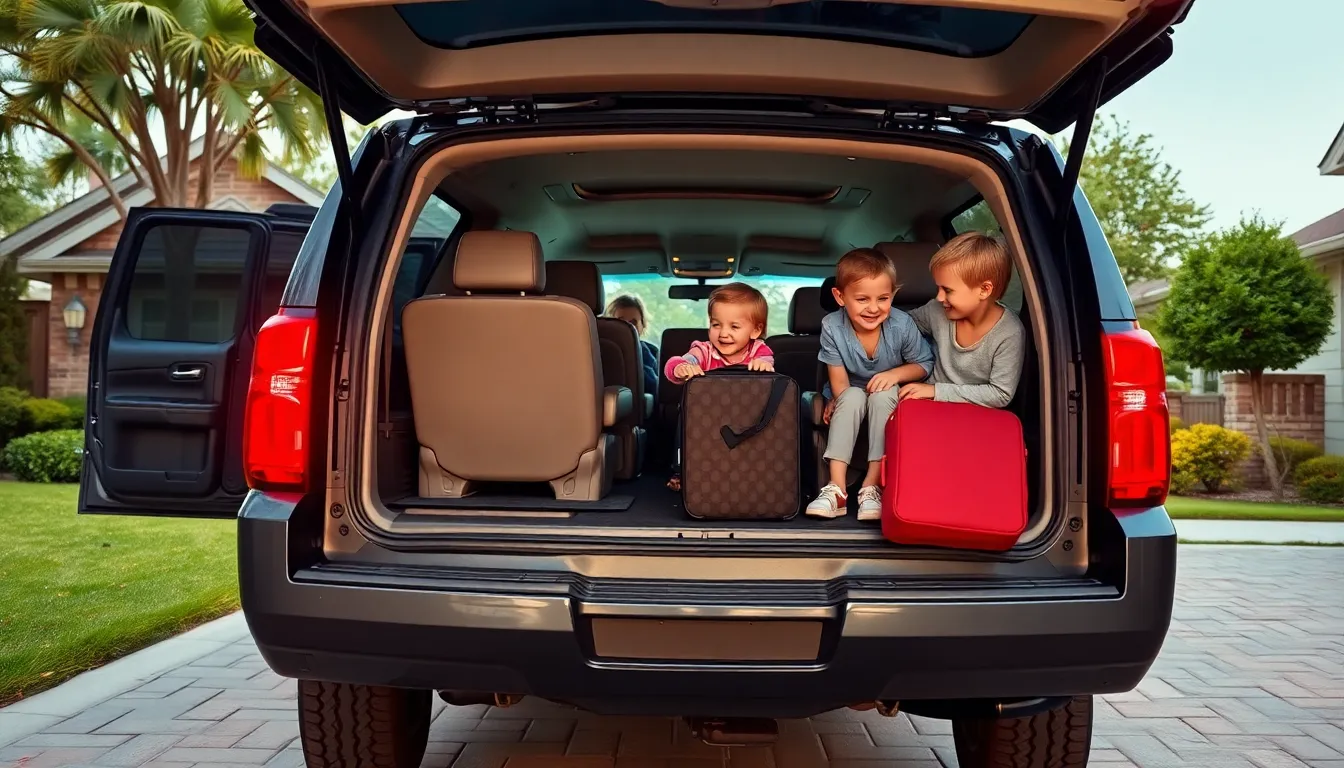
Large families need vehicles that prioritize space and functionality. We’ve identified the most practical big cars that excel in both passenger comfort and storage capacity.
Seating Capacity and Configuration Options
Eight-seat configurations dominate our top family vehicle recommendations. The Chevrolet Suburban leads with standard eight-passenger seating across three spacious rows, featuring captain’s chairs in the second row and a bench seat accommodating three passengers in the third row.
Seven-passenger layouts offer enhanced comfort through second-row captain’s chairs. The GMC Yukon XL provides this configuration as standard, creating easier third-row access and individual armrests for middle passengers.
Flexible seating arrangements maximize versatility for growing families. The Ford Expedition MAX includes PowerFold third-row seats that fold flat with the push of a button, while second-row seats slide and tilt forward for effortless entry.
Premium comfort features elevate the passenger experience in luxury models. The Lincoln Navigator L offers quilted leather seating, heated and ventilated second-row captain’s chairs, and massage functions for long family road trips.
Child safety considerations remain paramount in family-focused designs. The Honda Pilot includes LATCH anchors in all second and third-row positions, accommodating multiple car seats or booster seats simultaneously.
Cargo Space and Storage Answers
Maximum cargo capacity reaches impressive levels in full-size family SUVs. The Chevrolet Suburban delivers 144.7 cubic feet of cargo space with all rear seats folded, providing room for camping gear, sports equipment, and luggage for extended family trips.
Behind-the-third-row storage offers practical everyday utility even with all seats occupied. The GMC Yukon XL provides 25.5 cubic feet of cargo space behind the third row, accommodating groceries, school bags, and sports gear for active families.
Underfloor storage compartments create hidden organization answers throughout the cabin. The Ford Expedition MAX features multiple storage bins beneath the cargo floor, plus door pockets and console compartments that keep family essentials organized and accessible.
Power liftgate systems simplify loading and unloading with hands full. The Toyota Sequoia includes a power liftgate with height adjustment and kick-sensor activation, allowing parents to open the rear easily while carrying children or packages.
Modular storage accessories expand organization capabilities for exact family needs. The Nissan Armada offers removable cargo organizers, shopping bag hooks, and tie-down points that secure everything from soccer balls to vacation supplies during transport.
Luxury Big Cars That Command Attention
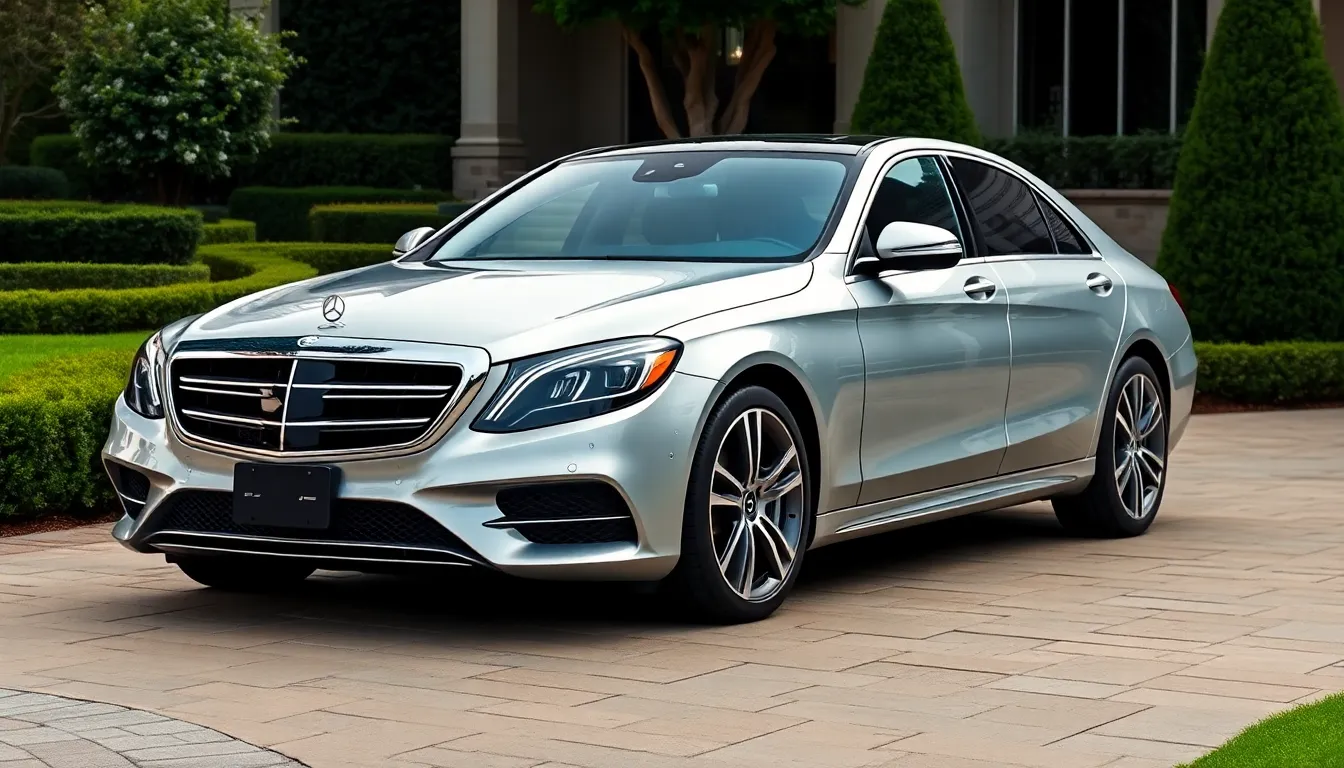
The luxury automotive segment showcases the most sophisticated examples of large vehicle engineering. These premium machines combine substantial proportions with exceptional craftsmanship and cutting-edge technology.
Premium Full-Size Sedans
Mercedes-Benz S-Class represents the pinnacle of executive sedan luxury with its 126.6-inch wheelbase and advanced driver assistance systems. Executive buyers appreciate the S-Class’s quilted leather seating, ambient lighting with 64 color options, and MBUX infotainment system that responds to natural voice commands.
BMW 7 Series delivers performance-oriented luxury through its twin-turbo V8 engine producing 523 horsepower and xDrive all-wheel drive capability. Business professionals choose the 7 Series for its gesture control technology, massaging rear seats, and executive lounge seating configuration that transforms the cabin into a mobile office.
Audi A8 combines quattro all-wheel drive with predictive active suspension that scans the road ahead using front-mounted cameras. Technology enthusiasts gravitate toward the A8’s virtual cockpit display, Bang & Olufsen 3D Advanced sound system, and AI traffic jam pilot that provides semi-autonomous driving capabilities.
Genesis G90 offers flagship luxury at a competitive price point with its 3.3-liter twin-turbo V6 engine and 22-speaker Lexicon audio system. Value-conscious luxury buyers appreciate the G90’s comprehensive warranty coverage, complimentary scheduled maintenance, and premium materials including genuine wood trim and Nappa leather upholstery.
High-End SUVs and Crossovers
Range Rover maintains its position as the ultimate luxury SUV with terrain response technology, air suspension, and a towing capacity of 7,716 pounds. Adventure-seeking affluent families choose Range Rover for its wade sensing system, off-road cruise control, and cabin air purification that filters out allergens and pollutants.
Mercedes-Benz GLS accommodates up to seven passengers in three rows of premium seating with AIRMATIC air suspension and E-ACTIVE BODY CONTROL that leans into corners. Luxury-focused families select the GLS for its hands-free liftgate, wireless phone charging, and Burmester surround sound system with 26 speakers.
BMW X7 delivers sports activity vehicle performance through its twin-turbo V8 engine and adaptive air suspension with multiple driving modes. Performance enthusiasts appreciate the X7’s kidney grille illumination, panoramic sky lounge LED roof, and driving assistant professional package that includes highway assistant functionality.
Cadillac Escalade commands American roads with its 6.2-liter V8 engine, magnetic ride control, and 38-inch curved OLED display spanning the entire dashboard width. Status-conscious buyers choose Escalade for its Super Cruise hands-free driving, AKG Studio 36-speaker audio system, and power-folding third row seats that create 144.7 cubic feet of cargo space.
Most Fuel-Efficient Big Cars Available Today
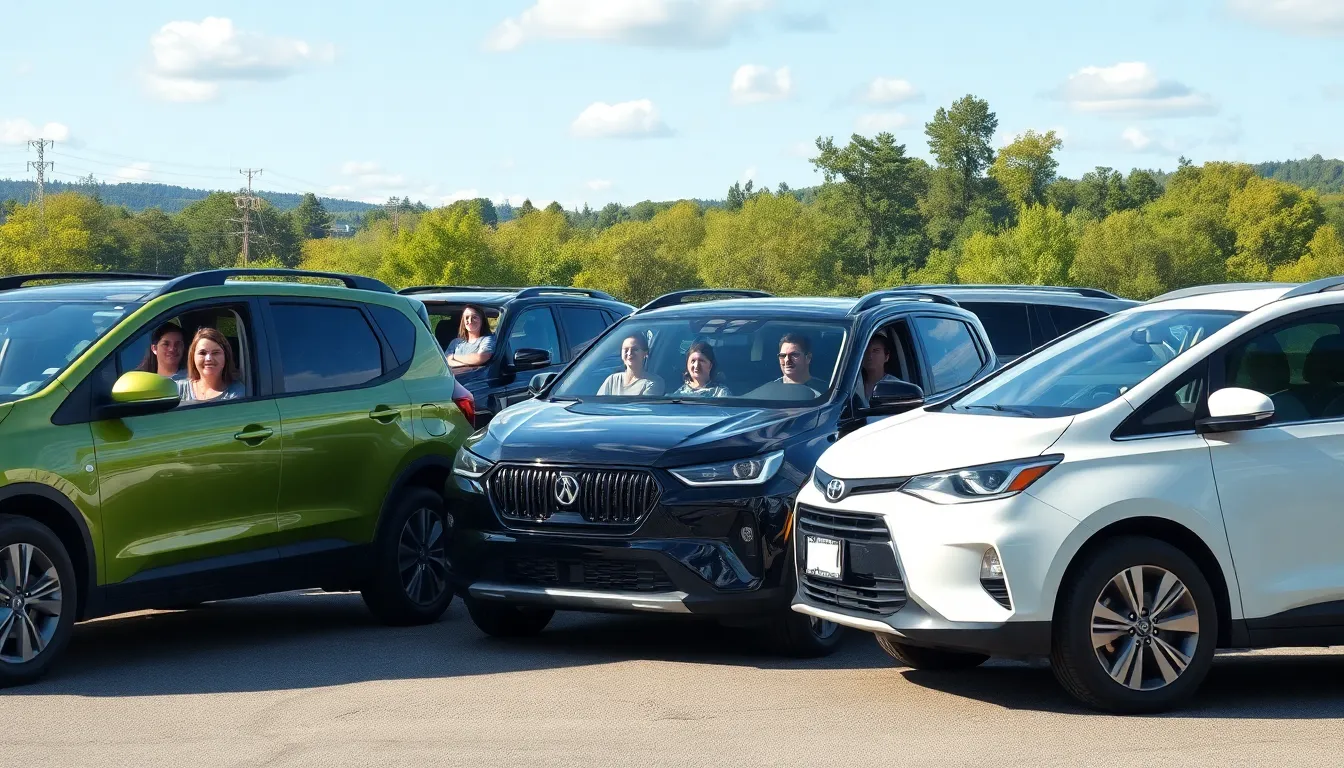
While big cars traditionally sacrifice fuel economy for size and capability, today’s automotive technology delivers impressive efficiency options for large vehicle buyers.
Hybrid and Electric Large Vehicles
Toyota Highlander Hybrid leads our hybrid SUV recommendations with an EPA-estimated 36 mpg combined rating. This three-row crossover accommodates eight passengers while delivering exceptional fuel efficiency through its advanced hybrid powertrain. Families appreciate the seamless transition between electric and gasoline power during daily driving.
Lexus GX 460 Hybrid offers luxury buyers a premium alternative with 28 mpg combined efficiency. The sophisticated hybrid system pairs with a spacious interior that seats up to seven passengers comfortably. Advanced technology features include predictive traffic routing and regenerative braking optimization.
Ford Explorer Hybrid achieves 28 mpg combined while maintaining full three-row functionality for large families. The intelligent all-wheel-drive system automatically adjusts power distribution for optimal efficiency in various driving conditions. Police departments nationwide choose this hybrid platform for fleet operations due to its reliability and fuel savings.
Chrysler Pacifica Hybrid stands as the only hybrid minivan option, delivering 32 mpg combined with seating for eight passengers. The plug-in hybrid system provides 32 miles of electric-only range for short commutes and errands. Storage capacity remains uncompromised with 140.5 cubic feet of passenger space available.
BMW X7 xDrive40i Hybrid brings luxury efficiency to the full-size SUV segment with 25 mpg combined ratings. The mild-hybrid technology assists the twin-turbo engine during acceleration while improving overall fuel economy. Premium materials and advanced driver assistance systems justify the higher price point for affluent buyers.
Traditional Engines with Better MPG
Honda Pilot achieves 23 mpg combined through its efficient V6 engine and advanced transmission technology. The three-row SUV accommodates eight passengers while maintaining Honda’s reputation for long-term reliability and lower maintenance costs. Variable cylinder management automatically deactivates cylinders during light-load driving conditions.
Toyota Sequoia delivers 22 mpg combined with its new twin-turbo V6 engine replacing the previous V8 configuration. The full-size SUV maintains 7,400 pounds of towing capacity while improving fuel efficiency by approximately 15% over the previous generation. Families benefit from standard Toyota Safety Sense 2.0 technology across all trim levels.
Mazda CX-9 offers 25 mpg combined through its turbocharged four-cylinder engine and lightweight construction techniques. The three-row crossover prioritizes driving dynamics while delivering competitive fuel economy for its size class. Premium interior materials and advanced infotainment systems rival luxury competitors at a lower price point.
Subaru Ascent provides 24 mpg combined with standard all-wheel drive and seating for eight passengers. The turbocharged boxer engine delivers smooth power delivery while maintaining Subaru’s legendary traction capabilities. Standard EyeSight driver assistance technology enhances safety for families choosing this practical option.
Chevrolet Traverse achieves 25 mpg combined through its efficient V6 engine and nine-speed automatic transmission. The midsize crossover offers 98.2 cubic feet of cargo space with rear seats folded for maximum versatility. Advanced connectivity features include built-in Wi-Fi hotspot capability and wireless smartphone integration.
Big Cars with the Best Safety Ratings
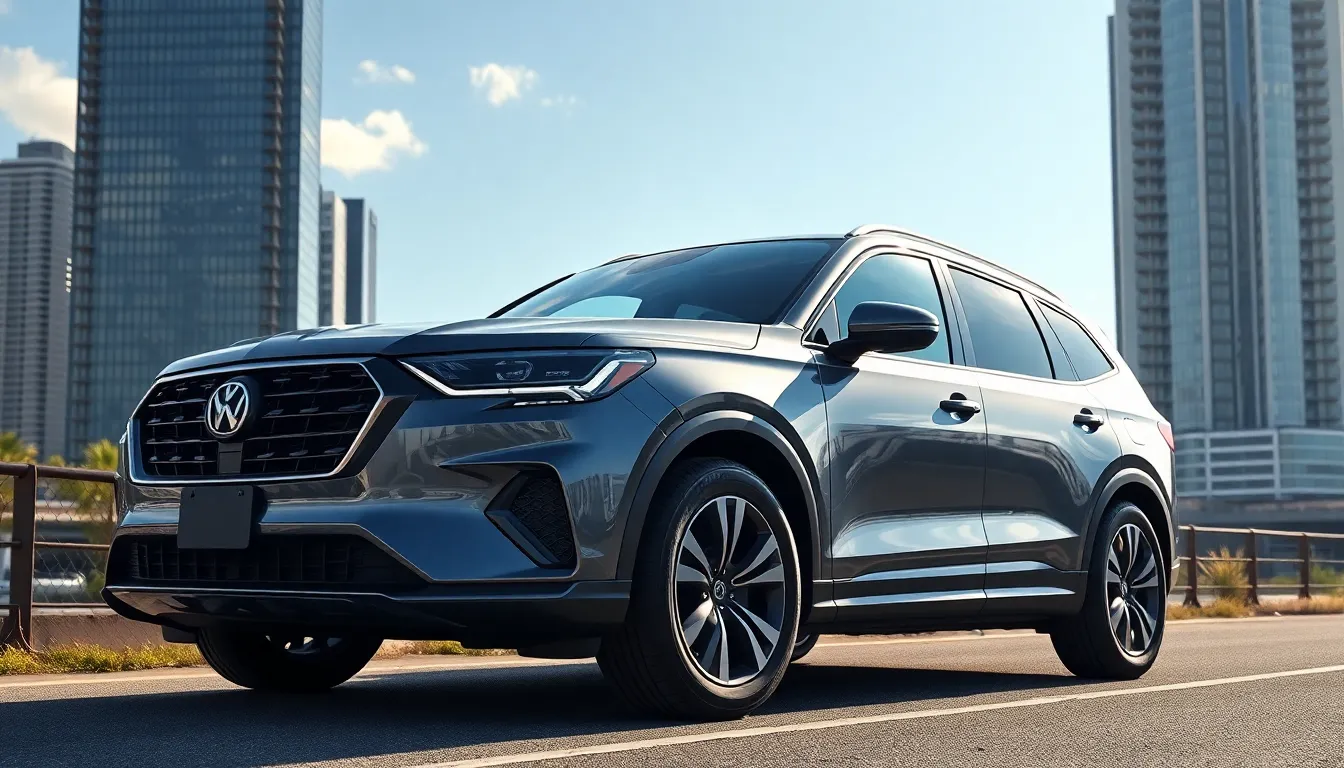
Large vehicles don’t just offer space and comfort—they deliver exceptional protection through advanced engineering and cutting-edge safety technology. We’ll explore the safest big cars that have earned prestigious safety awards and feature the most sophisticated driver assistance systems.
IIHS Top Safety Pick Winners
Acura MDX earns our top spot with its 2024 IIHS Top Safety Pick+ award, achieving Good ratings across all crashworthiness categories. The three-row luxury SUV scored Superior for front crash prevention and earned the highest Available award for headlight performance. Its AcuraWatch suite includes collision mitigation braking and road departure mitigation that actively prevents accidents.
Genesis GV80 stands out with its comprehensive safety package that earned IIHS recognition for outstanding crash protection. The luxury SUV features a robust body structure with 10 airbags and achieved Good ratings in moderate overlap front, side impact, and roof strength tests. Advanced high-strength steel construction provides exceptional occupant protection during collisions.
Volvo XC90 continues the Swedish automaker’s safety legacy with IIHS Top Safety Pick status and innovative safety features. The three-row SUV includes City Safety collision avoidance technology and Run-off Road Mitigation that steers back onto the roadway. Its safety cage design with crumple zones earned Good ratings across all IIHS crash tests.
BMW X5 combines luxury with safety excellence through its IIHS-recognized protection systems and 5-star NHTSA overall rating. The midsize luxury SUV features Active Protection that prepares occupants for potential impacts by pre-tensioning seatbelts and closing windows. Its reinforced passenger cell with strategic deformation zones maximizes crash energy absorption.
Advanced Driver Assistance Features
Blind Spot Monitoring systems in large vehicles like the Mercedes-Benz GLS use radar sensors to detect vehicles in adjacent lanes up to 10 feet behind the driver’s position. The system provides visual alerts in side mirrors and audible warnings when drivers attempt lane changes with approaching traffic. Advanced versions include rear cross-traffic alert that warns of perpendicular approaching vehicles during backing maneuvers.
Adaptive Cruise Control technology in models such as the Toyota Sequoia maintains safe following distances automatically using forward-facing cameras and radar detection. The system adjusts vehicle speed to match traffic flow and can bring the SUV to a complete stop in congestion. Stop-and-go functionality resumes driving when traffic moves forward without driver intervention.
Lane Keeping Assistance features in the Ford Expedition use camera-based detection to monitor road markings and provide steering corrections when vehicles drift from their lanes. The system delivers gentle steering inputs to guide the SUV back to center position and includes lane departure warnings through seat vibrations. Enhanced versions offer hands-free driving capabilities on pre-mapped highways with driver monitoring systems.
Forward Collision Warning with automatic emergency braking in the Chevrolet Suburban uses dual-camera systems to detect potential frontal impacts with vehicles, pedestrians, and cyclists. The technology provides visual and audible alerts before applying maximum braking force to prevent or reduce collision severity. Advanced systems recognize stationary objects and can stop the vehicle from speeds up to 50 mph.
360-Degree Camera Systems in luxury models like the Cadillac Escalade provide bird’s-eye views using four exterior cameras that create seamless overhead imagery. The technology assists with parking maneuvers and low-speed driving in tight spaces by displaying real-time video feeds on the infotainment screen. Ever-changing guidelines adjust based on steering input to predict the vehicle’s path during parking operations.
Affordable Big Cars Under $50,000
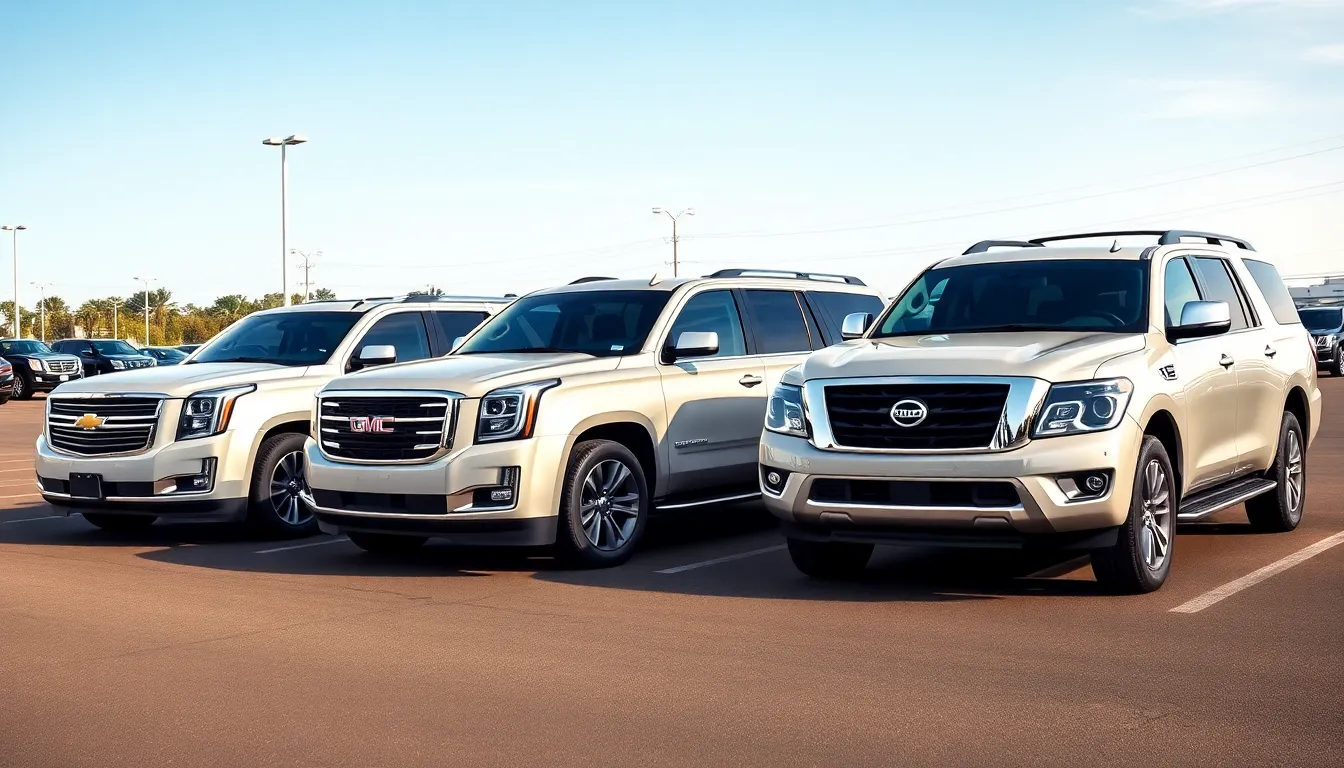
Budget-conscious buyers can still access impressive large vehicles without very costly. We’ve identified standout options that deliver substantial size and capability while maintaining reasonable price points.
Value-Oriented Full-Size Options
Chevrolet Suburban LS starts at $37,400 and offers exceptional space for growing families. This three-row SUV provides seating for up to nine passengers while delivering 144.7 cubic feet of cargo capacity. Standard features include an 8-inch touchscreen infotainment system and advanced safety technologies like Forward Collision Alert and Lane Keep Assist.
GMC Yukon SLE delivers premium styling at $38,800 with sophisticated interior appointments. The vehicle features flexible second-row captain’s chairs and power-folding third-row seats for optimal passenger comfort. Advanced connectivity options include wireless Apple CarPlay and Android Auto integration alongside a 10.2-inch touchscreen display.
Ford Expedition XLT combines rugged capability with family-friendly features starting at $39,200. This full-size SUV boasts best-in-class towing capacity of 9,300 pounds when properly equipped. Interior highlights include heated front seats, a power liftgate, and Ford’s SYNC 4 infotainment system with voice recognition.
Nissan Armada SV provides competitive pricing at $36,400 with impressive standard equipment levels. The vehicle offers three-zone automatic climate control and a power-adjustable driver’s seat for enhanced comfort. Safety features include Automatic Emergency Braking and Blind Spot Warning as standard equipment.
Toyota Sequoia SR5 starts at $42,300 and emphasizes reliability alongside spacious accommodations. This SUV features Toyota’s renowned V8 engine and offers seating for eight passengers across three rows. Standard technology includes a 14-inch touchscreen and Toyota Safety Sense 2.0 suite of driver assistance features.
Used Big Car Bargains
2019-2021 Chevrolet Suburban models typically range from $32,000 to $45,000 depending on mileage and trim level. These vehicles maintain excellent value retention while offering modern safety features and connectivity options. Certified pre-owned examples include extended warranties for additional peace of mind.
2018-2020 GMC Yukon XL provides luxury appointments at reduced prices between $28,000 and $42,000. Previous-generation models feature spacious interiors with premium materials throughout the cabin. Many examples include desirable options like leather seating, navigation systems, and rear entertainment packages.
2017-2019 Ford Expedition offers important savings with prices ranging from $25,000 to $38,000 for well-maintained examples. These aluminum-bodied SUVs deliver improved fuel economy compared to predecessor models. Popular features include panoramic sunroofs, heated and cooled seats, and advanced towing packages.
2016-2018 Nissan Armada represents exceptional value with typical pricing between $22,000 and $35,000. These vehicles feature the powerful VK56 V8 engine and offer impressive towing capabilities up to 8,500 pounds. Interior amenities often include leather-appointed seating and dual-zone climate control systems.
2015-2017 Toyota Sequoia provides legendary reliability with used prices ranging from $20,000 to $33,000. These SUVs feature the durable 5.7-liter V8 engine known for longevity and consistent performance. Many examples include desirable options like JBL premium audio systems and power-folding third-row seats.
Big Cars Perfect for Towing and Hauling
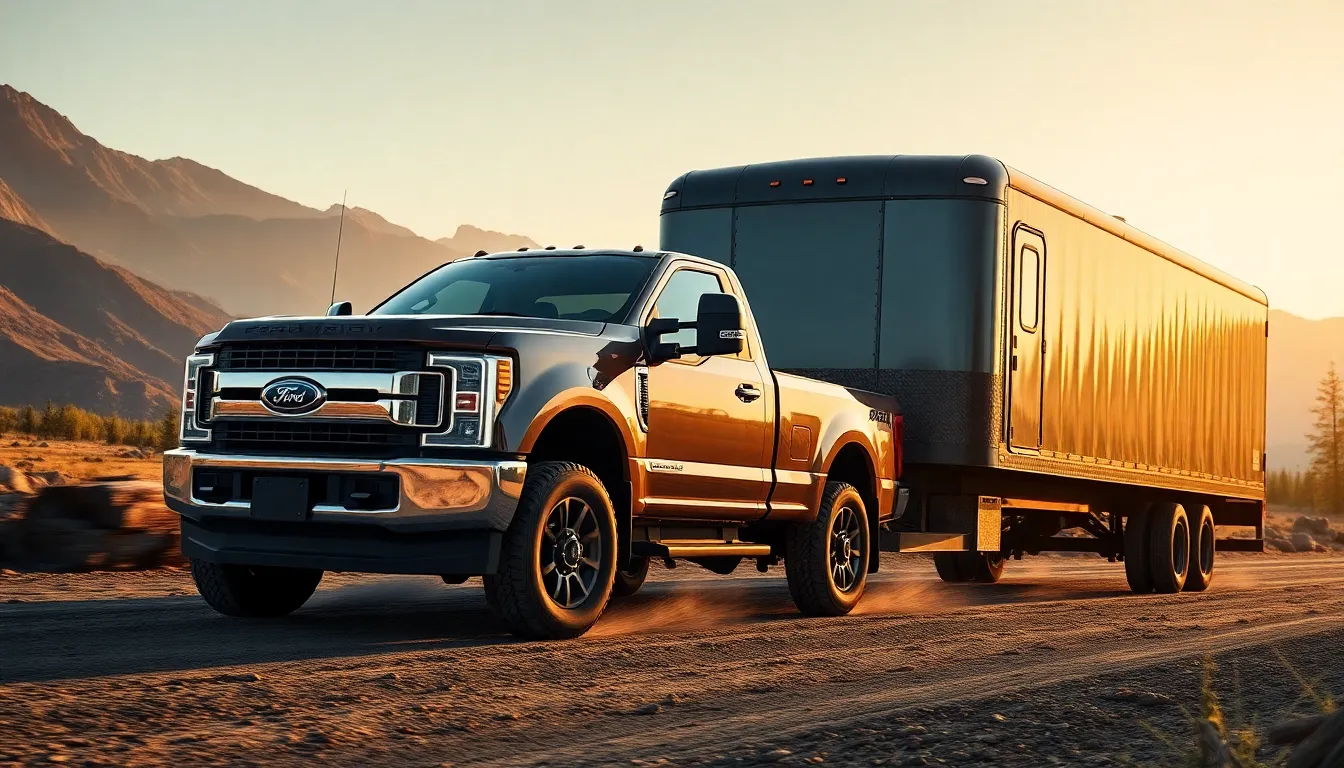
When serious towing and hauling demands arise, we need vehicles engineered for heavy-duty performance that won’t compromise on capability or reliability.
Maximum Towing Capacity Leaders
Ford F-250 Super Duty dominates the towing industry with its impressive 20,000-pound maximum capacity when properly equipped. This heavy-duty pickup combines a 6.7-liter Power Stroke diesel engine with advanced trailer brake controllers and integrated trailer backup assist technology. We’ve found that its high-strength steel frame and sophisticated suspension system handle the most demanding loads with confidence.
Chevrolet Silverado 2500HD delivers exceptional towing strength with capacities reaching 18,500 pounds using its Duramax 6.6-liter diesel engine. Advanced features like trailer sway control and hill start assist make this truck particularly effective for recreational vehicle towing. The integrated trailer brake controller and multiple camera angles provide drivers with comprehensive monitoring capabilities during heavy towing operations.
GMC Sierra 2500HD matches its Chevrolet counterpart with similar 18,500-pound towing specifications while adding premium interior appointments and refined ride quality. Professional Grade engineering includes specialized cooling systems and transmission calibration optimized for sustained towing performance. We appreciate how the available carbon fiber bed and advanced trailering package enhance both capability and convenience.
Ram 2500 achieves remarkable towing numbers up to 19,680 pounds with its available Cummins 6.7-liter turbo diesel engine and class-exclusive coil spring rear suspension. The truck’s innovative air suspension system automatically levels loads and maintains optimal ride height during towing scenarios. Advanced trailer reverse guidance and 360-degree camera systems make maneuvering large trailers significantly easier for drivers.
Nissan Titan XD provides strong towing capability with its 11,960-pound maximum rating while offering competitive pricing in the heavy-duty segment. The available 5.6-liter V8 engine delivers consistent power delivery for boat trailers and travel trailers alike. We’ve noted that its integrated trailer brake controller and tow haul mode optimize transmission performance for different hauling conditions.
Payload and Hauling Specifications
Ford F-350 Super Duty leads payload capacity with impressive 7,850-pound ratings in regular cab configurations equipped with dual rear wheels. This capability stems from robust frame construction using high-strength steel and reinforced suspension components designed for commercial applications. The available snow plow prep package and upfitter switches make this truck particularly versatile for work applications requiring maximum payload capacity.
Chevrolet Silverado 3500HD offers substantial payload ratings reaching 7,442 pounds with proper equipment and configuration choices. The truck’s available diesel engine provides excellent torque characteristics for heavy loads while maintaining competitive fuel efficiency numbers. We’ve observed that its integrated trailer brake controller and stabilitrak system enhance safety when operating at maximum payload specifications.
GMC Sierra 3500HD delivers comparable payload performance with ratings up to 7,442 pounds while adding premium comfort features and advanced technology integration. The available Duramax diesel engine produces 445 horsepower and 910 lb-ft of torque for exceptional hauling performance. Professional Grade features include skid plates and heavy-duty cooling systems that protect vital components during demanding work cycles.
| Vehicle Model | Maximum Towing Capacity | Maximum Payload | Engine Options |
|---|---|---|---|
| Ford F-250 Super Duty | 20,000 lbs | 4,260 lbs | 6.7L Power Stroke Diesel |
| Chevrolet Silverado 2500HD | 18,500 lbs | 3,979 lbs | 6.6L Duramax Diesel |
| GMC Sierra 2500HD | 18,500 lbs | 3,979 lbs | 6.6L Duramax Diesel |
| Ram 2500 | 19,680 lbs | 4,010 lbs | 6.7L Cummins Diesel |
| Ford F-350 Super Duty | 21,200 lbs | 7,850 lbs | 6.7L Power Stroke Diesel |
Ram 3500 achieves exceptional payload numbers with ratings reaching 7,680 pounds in regular cab dual rear wheel configurations. The available Cummins High Output diesel engine generates 1,075 lb-ft of torque for superior pulling power in challenging conditions. Advanced load leveling systems and electronic stability control maintain vehicle composure when operating at maximum capacity specifications.
Chevrolet Suburban 2500 provides unique payload capability in the SUV segment with ratings up to 2,250 pounds while maintaining passenger comfort and cargo versatility. This three-quarter-ton SUV combines heavy-duty suspension components with advanced traction management systems for confident hauling performance. We’ve found that its flexible seating configurations and generous cargo space make it particularly effective for family hauling needs requiring substantial payload capacity.
Maintenance Costs of Owning Big Cars
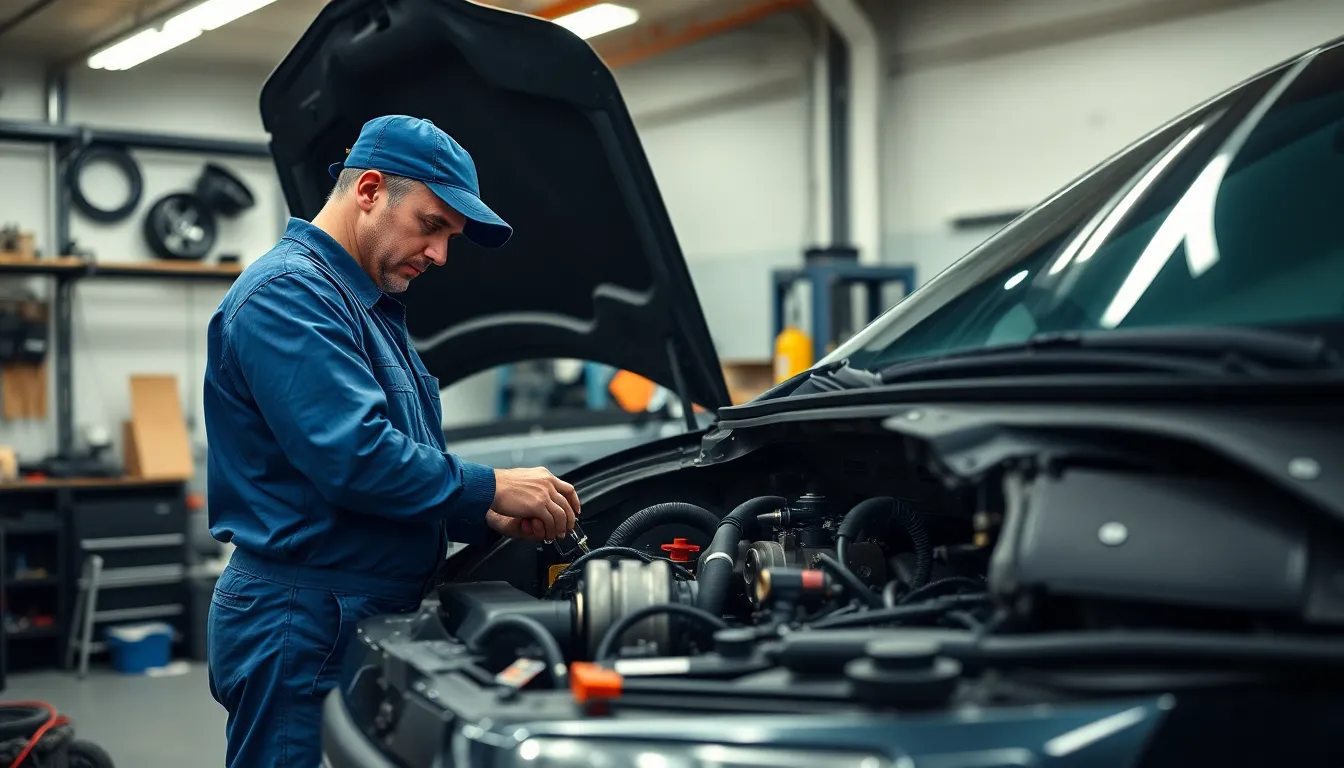
Big car ownership extends beyond the initial purchase price into ongoing financial commitments that can significantly impact your budget. These substantial vehicles require specialized maintenance approaches that reflect their size, complexity, and premium components.
Insurance and Registration Expenses
Insurance premiums for large vehicles typically run 20-40% higher than compact car coverage due to increased replacement costs and liability exposure. Full-size SUVs like the Chevrolet Suburban carry annual insurance costs averaging $2,400-$3,200, while luxury models such as the BMW X7 can reach $3,500-$4,500 yearly. Registration fees scale with vehicle weight and value, meaning a Ford F-250 Super Duty weighing over 8,000 pounds faces registration costs of $400-$800 annually compared to $150-$300 for smaller vehicles.
Commercial insurance rates apply to heavy-duty trucks used for business purposes, adding another $500-$1,200 to annual premiums. Comprehensive coverage becomes essential given the higher theft rates for popular large vehicles, with models like the GMC Yukon XL experiencing above-average theft claims. Multi-vehicle discounts can offset some costs, though the savings rarely compensate for the base premium increases associated with big car ownership.
Repair and Service Considerations
Service intervals for large vehicles often require specialized equipment and facilities, driving up maintenance costs by 30-60% compared to standard sedans. Oil changes alone cost $80-$150 for full-size trucks and SUVs due to larger oil capacities and premium filter requirements, while compact cars typically need $35-$60 services. Tire replacement represents a important expense, with sets for vehicles like the Ram 3500 costing $1,200-$2,000 compared to $400-$800 for smaller cars.
Brake system maintenance scales dramatically with vehicle weight, as heavy-duty components for trucks and large SUVs cost 2-3 times more than standard passenger car parts. Transmission services for big cars run $300-$600 due to complex systems and larger fluid capacities, while air suspension systems in luxury models like the Range Rover require specialized repairs averaging $2,500-$4,000 when components fail.
Parts availability can extend repair times and increase costs, particularly for commercial vehicles or specialized luxury models that require dealer-exact components. Labor rates at authorized service centers often exceed independent shops by $50-$100 per hour, making routine maintenance more expensive for warranty-covered vehicles.
Future of Big Cars in the Electric Age

Electric propulsion technology is fundamentally transforming the industry of large vehicles as manufacturers race to electrify their biggest models. We’re witnessing an unprecedented shift where traditional gas-guzzling giants are being reimagined with cutting-edge electric powertrains.
Upcoming Electric Large Vehicles
Ford F-150 Lightning leads the electric truck revolution with impressive towing capacity up to 10,000 pounds and a driving range of 320 miles. This full-size pickup maintains its work truck credentials while delivering instant torque and quiet operation that traditional trucks can’t match.
Chevrolet Silverado EV promises to deliver over 400 miles of range when it launches, making it one of the longest-range electric trucks available. The vehicle features a Multi-Flex Midgate system that creates up to 10.7 feet of cargo bed length for maximum utility.
GMC Hummer EV represents the extreme end of electric performance with 1,000 horsepower and the ability to accelerate from 0-60 mph in just 3 seconds. This electric supertruck offers advanced off-road capabilities including CrabWalk mode and Extract Mode for challenging terrain.
BMW iX enters the luxury electric SUV segment with a spacious three-row configuration and up to 324 miles of EPA-estimated range. The vehicle combines premium materials with advanced driver assistance features in a package that rivals traditional luxury SUVs.
Mercedes EQS SUV brings S-Class luxury to the electric SUV market with seating for up to seven passengers and a range exceeding 350 miles. This flagship electric SUV features MBUX Hyperscreen technology and advanced air suspension for superior comfort.
Cadillac Escalade IQ will electrify America’s most recognizable luxury SUV with an expected range of over 400 miles and signature Cadillac styling cues. The vehicle promises to maintain the Escalade’s commanding road presence while delivering whisper-quiet electric performance.
Technology Trends and Innovations
Solid-state battery technology is revolutionizing electric big cars with energy densities up to 50% higher than current lithium-ion batteries. These batteries charge faster, last longer, and provide greater range, making them ideal for large vehicles that need substantial power reserves.
Bidirectional charging capabilities allow electric large vehicles to serve as mobile power stations, providing up to 9.6 kW of electricity to homes during outages. This Vehicle-to-Home (V2H) technology transforms big electric cars into emergency backup power sources for entire households.
Advanced thermal management systems optimize battery performance in extreme weather conditions, ensuring consistent range and charging speeds regardless of climate. These systems use heat pumps and intelligent temperature control to maintain optimal battery temperatures.
Over-the-air software updates enable continuous improvement of vehicle performance, adding new features and optimizing existing systems without visiting service centers. Manufacturers can enhance charging algorithms, improve energy efficiency, and add new driver assistance features remotely.
Megacasting manufacturing reduces vehicle weight by up to 20% through single-piece aluminum castings that replace hundreds of individual parts. This technology allows electric big cars to maintain structural integrity while reducing overall mass for improved efficiency.
Wireless charging integration is being developed for large electric vehicles, allowing convenient charging without plugging in cables. High-power wireless systems can deliver up to 11 kW of charging power through magnetic induction technology embedded in parking surfaces.
Conclusion
The automotive industry is clearly shifting toward larger vehicles and we’re witnessing an exciting transformation. From traditional gas-powered giants to innovative electric powerhouses the big car segment continues to evolve with consumer demands.
Whether you’re drawn to the commanding presence of a full-size SUV or the utility of a large pickup truck these vehicles offer undeniable advantages. The combination of space safety features and advanced technology makes them increasingly attractive to families and professionals alike.
As electric technology matures we can expect big cars to become even more efficient and environmentally conscious. The future promises to deliver the size and capability we want without compromising on sustainability or performance.
Frequently Asked Questions
What are the main reasons people choose large vehicles like SUVs and trucks?
People prefer large vehicles for several key reasons: enhanced safety perception due to size and weight, superior cargo capacity for families and activities, excellent towing capabilities for boats or trailers, better performance in challenging weather conditions, and the status symbol associated with owning a substantial vehicle. These factors combined make large vehicles appealing despite higher costs.
Which are the largest SUVs currently available in America?
The top largest SUVs include the Chevrolet Suburban, GMC Yukon XL, and Ford Expedition MAX. These full-size SUVs offer maximum passenger seating (up to 8-9 people), extensive cargo space, and advanced technology features. They’re designed for families needing substantial space and capability while maintaining comfort and modern amenities.
Are there affordable large vehicles under $50,000?
Yes, several large vehicles are available under $50,000, including base trim levels of popular SUVs and pickup trucks. Used car markets also offer excellent bargains on previously owned large vehicles. Budget-conscious buyers can find reliable options by considering certified pre-owned programs, which provide warranties and quality assurance at reduced prices.
What are the main drawbacks of owning large vehicles?
Large vehicle ownership presents several challenges: significantly higher fuel costs due to lower efficiency, difficulty parking in tight urban spaces, higher insurance premiums, increased maintenance expenses including specialized parts and services, and higher tire replacement costs. These ongoing expenses require careful budget consideration before purchasing.
How is electric technology changing the large vehicle market?
Electric propulsion is revolutionizing large vehicles with models like the Ford F-150 Lightning, Chevrolet Silverado EV, and GMC Hummer EV. These electric trucks offer impressive towing capacity, advanced technology features, and significant fuel savings while maintaining the size and capability that consumers expect from large vehicles.
What safety features do modern large vehicles offer?
Modern large vehicles include advanced driver assistance systems such as automatic emergency braking, blind spot monitoring, lane departure warning, adaptive cruise control, and 360-degree camera systems. Many models achieve top safety ratings from NHTSA and IIHS, combining their inherent size advantage with cutting-edge safety technology.
Which large vehicles are best for families?
Family-friendly large vehicles include the Chevrolet Suburban, Honda Pilot, and Toyota Sequoia. These models offer flexible seating configurations (7-9 passengers), ample cargo space, multiple USB ports, entertainment systems, and safety features specifically designed for family needs. They balance space, comfort, and practicality effectively.
What luxury options are available in large vehicles?
Luxury large vehicles include premium SUVs and full-size sedans featuring high-end materials, advanced infotainment systems, premium sound systems, leather interiors, and sophisticated driver assistance technologies. These vehicles combine spaciousness with craftsmanship and cutting-edge technology for discerning buyers seeking both size and refinement.

